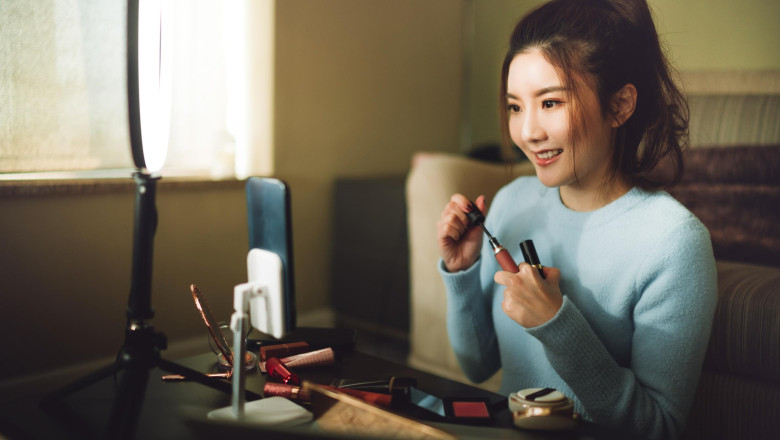
views
Council Post: What Is RED (Xiaohongshu) And How Can It Unlock A New Revenue Stream?
What Is RED (Xiaohongshu) And How Can It Unlock A New Revenue Stream?![]()
Boasting over 100 million monthly active users, RED is a Chinese social platform that e-commerce brands shouldn’t sleep on. This up-and-coming app is described as “China’s Instagram on steroids,” and its largest user base consists of people who fall into a similar group. Our agency specializes in Chinese marketing, and clients have seen great success integrating Xiaohongshu into their strategy.
What is RED (Xiaohongshu)?
As you’re likely aware, Chinese residents are blocked from most Western social media platforms like Facebook, Instagram, Twitter and even Google. China has created several of its own social media platforms, such as WeChat, Douyin, QQ, Baidu Tieba and Sina Weibo, which are heavily regulated by the Chinese government.
Established in 2013 and valued at more than $3 billion, Xiaohongshu, also known as Little Red Book or simply RED, is one of China’s newest and fastest-growing social media platforms. It differs from other social networks because it is more focused on products, shopping and lifestyle rather than simply staying in touch.
On RED, you’ll find many KOLs (key opinion leaders) and the rising KOCs (key opinion consumers). Beginning as a product review site where consumers would go for unbiased insights, it’s only natural that some of its users would rise in influence and end up as go-to trusted sources.
Who uses RED?
It makes sense that RED is growing so quickly—luxury goods are a sign of status in Chinese culture, which explains the rising market share. It’s only a logical next step to blur the lines between e-commerce and social media.
RED tends to be most popular among urban and overseas Chinese people who have significant purchasing power and shop frequently to discover new products. Although the platform is gaining popularity among other demographics, most users are younger women. More specifically, the platform consists of 80% females, and approximately 90% of them are under age 32.
RED’s slogan changed from “Finding good stuff overseas” in 2014 to “Marking your beautiful things” in 2021, indicating new positioning and an expanding user base. Growing from the initial overseas shopping experience to diversified content like beauty, household, travel, sports, learning and more, there’s something for everyone on RED.
China’s cities are divided into a four-tier system categorized on population, average GDP, cultural significance, economic growth, access to strong public transportation and other factors. Approximately 60% of RED users live in Tier 1 or Tier 2 cities, which represent a select proportion of the best of the country’s total cities.
Chinese people living in Western countries also have a RED presence, with various KOLs based in Vancouver and Toronto. Immigrants often continue using their own social platforms like RED to keep up with lifestyle trends, along with apps like WeChat to keep in touch with friends and family back home.
How does RED compare to Western social media?
While many Western social networks were created to keep up with friends’ lives, most RED users use the platform to search and share new products and services. The platform heavily capitalizes on the “aspirational content” that social media influencers find success posting on Instagram, YouTube and TikTok to build connections with brands.
RED audiences generally prefer user-generated content, akin to many Western networks. Differing from Instagram and Pinterest, it also allows long-form articles and, of course, a strong focus on e-commerce.
Advertising On RED
China’s purchasing power is the second-largest in the world just behind the United States and is worth more than the likes of Japan, Germany, the U.K. and India combined. To market products to Chinese customers, thinking outside the box can build brand visibility. There are many cultural norms to consider, so hiring an experienced agency to manage campaigns can ensure the right message is being sent with cultural fluency throughout.
• Open an official account
Much like WeChat and other networks, it’s possible for overseas brands to open an official account to better reach their desired audience through feed photos, videos and text posts. Consumers can purchase products directly from your account, reducing the friction point of taking them off the app.
Setting up an official account is more difficult than creating a Facebook page—the Chinese government requires networks to ask for verification documents such as your business and trademark license, certificate of incorporation, customs registration form and others.
Organic strategies like using relevant hashtags, high-quality imagery, user-generated content and keyword optimization are effective on RED. Brands can post an unlimited number of times, so it’s best to get testing to see what works.
• Partner with KOLs & KOCs
Living true to their name, social media influencers typically have a loyal following. Oftentimes sponsored posts and livestreams are indistinguishable from their organic counterparts; thus, they can build a great deal of trust.
KOCs generally have a smaller following but can often be more effective. RED has cultivated an environment where young people turn to their peers’ content rather than placing heavy value on celebrities and brands like on many other platforms. Before partnering with a KOC, be sure to conduct thorough research on their audience for alignment with your target.
• Use display ads in conjunction with other tactics
Similar to Instagram and Facebook, RED offers main feed advertising options. The targeting, however, is not as powerful and relies on less than 20 interest groups. Pop-up and keyword ads are also options.
Since RED’s platform is built upon authenticity, standard digital advertising opportunities aren’t as robust as those on other platforms. I’d recommend only using paid ad placements to supplement other strategies, such as KOL or KOC marketing.
Final Words
RED presents the perfect opportunity to reach an audience specifically looking to discover new brands. Although the overall user base is smaller than big players like WeChat or Instagram, its niche, mission-focused audience continues to grow—along with the brands already leveraging it. As social commerce continues to rise, RED could be the platform you’ve been looking for to turn your ROI a bright shade of green.




















Comments
0 comment